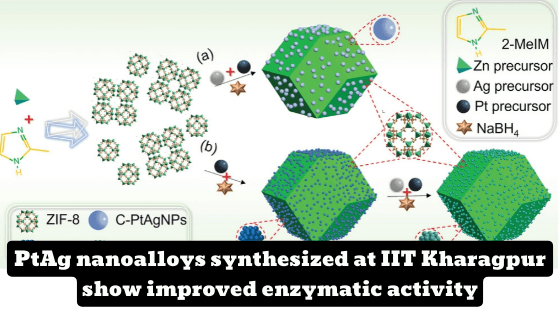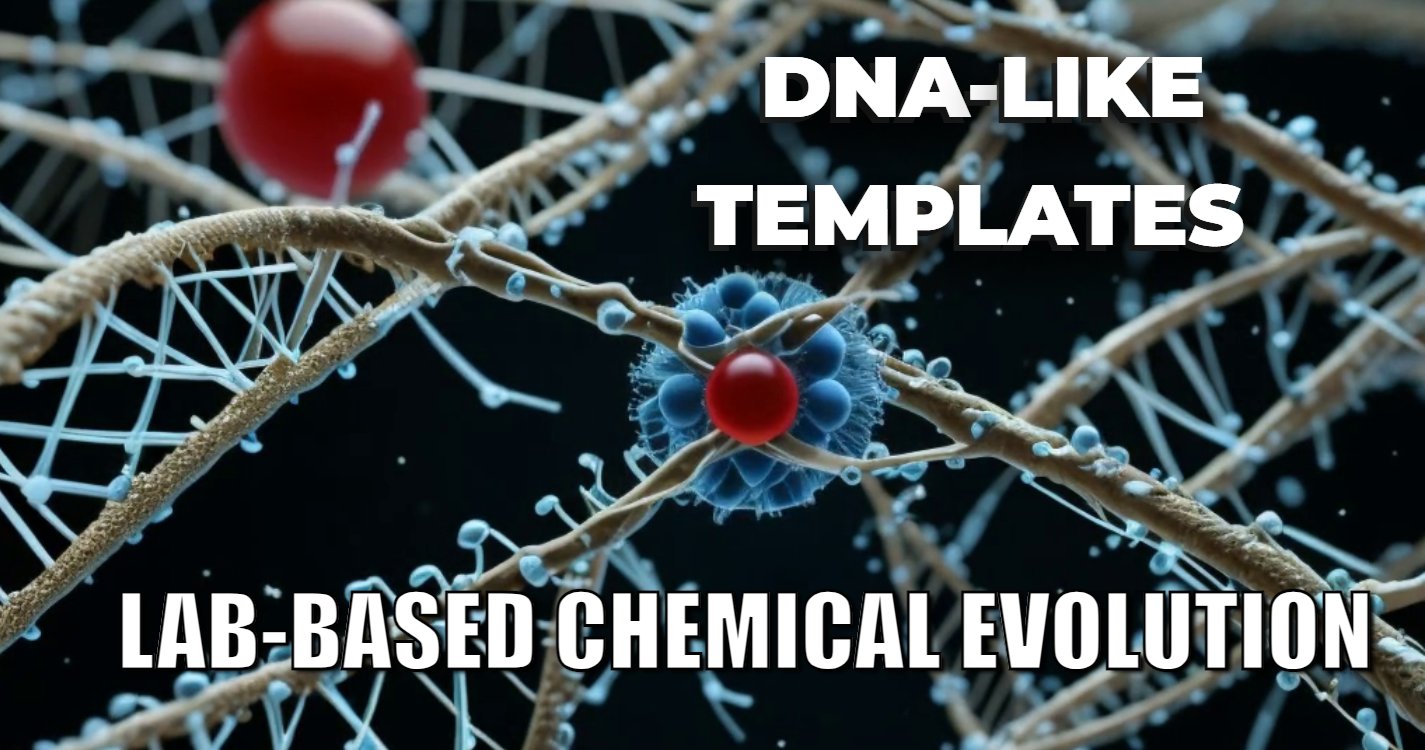Researchers at IIT Kharagpur Discover Improved Performance in PtAg Nanozymes Outcomes: The study reveals that doping with Ag in Pt nanocatalysts significantly enhances the catalytic activity due to a synergistic effect between the two elements.
Bullet Point Summary:
- Pt NP-based nanomaterials display efficient enzyme-mimicking activity such as oxidase, ferroxidase, and peroxidase mimics.
- Ligands can block active sites on the metal surface, reducing the catalytic properties.
- The structure of PtAg alloys in ZIF-8 shows a brighter contrast and homogeneous distribution of Pt and Ag.
- Doping with Ag in Pt NCs greatly enhances the catalytic activity, likely due to the synergistic effect between Pt and Ag.
A recent study by researchers at IIT Kharagpur synthesized PtAg nanomaterials (NCs) using a co-reduction and Pt-guided method. The resulting nanozymes were characterized using X-ray diffraction, transmission electron microscopy, high-resolution TEM, and energy dispersive spectroscopy. The XRD data confirmed the presence of Pt, Ag, and Pt in the nanozyme. The catalytic activity of the nanoalcohols was evaluated using o-phenylenediamine as the chromogenic substrate, and the results indicated that the PtAg nanoalloys possess enhanced enzymatic activity compared to Ag@ZIF-8 catalysts.
The PtAg alloy was found to have a distinct structure in high-angle annular dark-field scanning transmission electron microscopy images, with a brighter contrast compared to the structure of ZIF-8. Elemental mapping showed a homogeneous distribution of Pt and Ag in the nanozymes, confirming the successful formation of the PtAg alloys. The vAg values for POD-, CAT-, and OD-like activities were found to be 100 times higher than those of vPt, implying that doping with Ag contributes to improved catalytic properties.
By investigating the size- and composition-dependent activity, the researchers found that trace Ag doping in Pt NCs greatly enhances the catalytic activity, likely due to the synergistic effect between Pt and Ag. The study suggests that a lower concentration of Ag leads to improved activity in nanozymes with different sizes.
The findings of this study have significant implications for the development of nanocatalysts for various reactions and devices. The full text of the paper, titled “Structural Analysis and Intrinsic Enzyme Mimicking Activities of Ligand-Free PtAg Nanoalloys,” can be accessed at https://doi.org/10.1002/smll.202206772.
What this paper is about
- Pt NP-based nanomaterials exhibit efficient enzyme mimetic activity such as ferroxidase-, oxidase-, and peroxidase-like mimics.
- However, ligands may also block the active sites on the metal surface, resulting in a decrease in the catalytic properties.
- Moreover, mimicking the activity of PtAg nanozymes with different sizes and compositions was evaluated.
What you can learn
- The structure of the PtAg alloy is particularly distinct in HAADF-STEM images for both G. The PtAg alloy has a brighter contrast as compared to the structure of ZIF-8, owing to the larger atomic mass of the elements Pt and Ag as compared to the Zn in ZIF-8.,d suggests the formation of smaller and uniform G. PtAgNCs-2 in ZIF-8, and,h shows the formation of the bigger size C. Elemental mapping shows the homogeneous distribution of Pt and Ag in both, G. PtAgNPs 4.5,j, respectively), indicating the successful formation of PtAg alloys.
- confirmed the successful formation of the PtAg alloy in ZIF-8 and an electron transfer from Ag to Pt due to the higher metallic electronegativity of Pt compared to that of Ag.
- In addition, the v Ag values were calculated to be 83 and, 36 900, and 4390 m s 1 g 1 Ag for POD-, CAT-, and OD-like activities, respectively, which was 100 times higher than those of v Pt. This may imply that doping with Ag contributes to enhanced catalytic properties.
- PtAgNCs-2 were added to the mixture of H 2 O 2 and TA, no increase in fluorescence intensity was observed, and fluorescence even decreased with the concentration of G. This indicates that no free OH was formed during the G. PtAgNCs-2 catalytic process in the presence of H 2 O.
- By investigating the size-and composition-dependent activity, we found that trace Ag doping in Pt NCs would greatly enhance the catalytic activity, which could be attributed to the synergistic effect between Pt and Ag.
- Pt on activity for nanozymes with different sizes suggests that a lower Ag.
Q: What is the paper about?
A: The paper is about the synthesis and characterization of PtAg nanomaterials (NCs) for their enzyme mimetic activity. The authors evaluated the effect of ligand-free PtAg nanoalloys on the activities of nanozymes and compared it with the activity of Ag@ZIF-8 catalysts.
Q: What are the main findings of the study?
A: The study found that the PtAg nanozymes (G. PtAgNCs-2) possess enhanced enzyme mimetic activity compared to Ag@ZIF-8 catalysts. The XRD data confirmed the presence of Pt, Ag, and Pt in the nanozyme. The study also found that trace Ag doping in Pt NCs greatly enhances the catalytic activity, which could be attributed to the synergistic effect between Pt and Ag.
Q: What techniques were used to characterize the PtAg nanomaterials?
A: The PtAg nanomaterials were characterized using X-ray diffraction (XRD), transmission electron microscopy (TEM), high-resolution TEM (HRTEM), and energy dispersive spectroscopy (EDS).





[…] IIT Kharagpur study demonstrates size-and composition-dependent catalytic activity of PtAg nanozymes […]